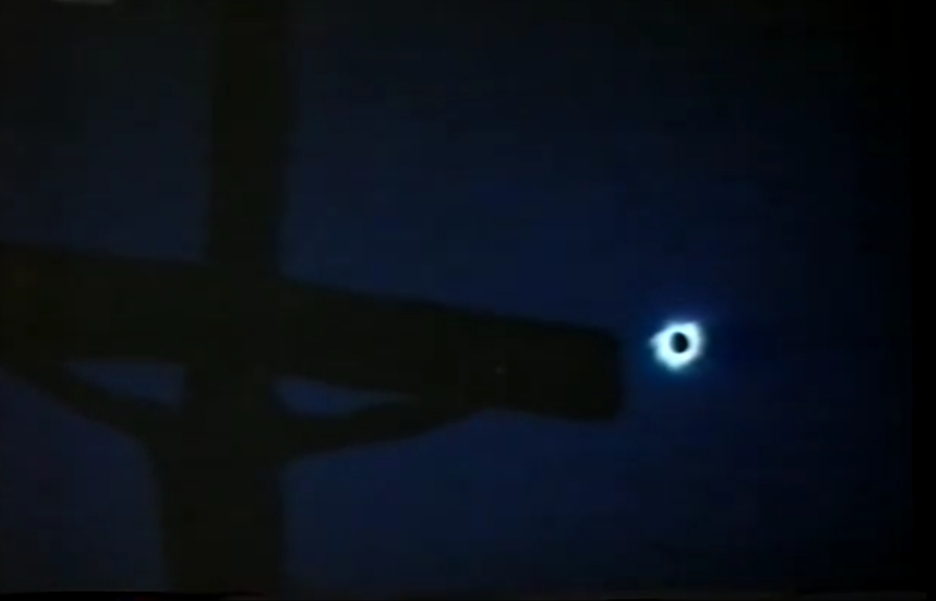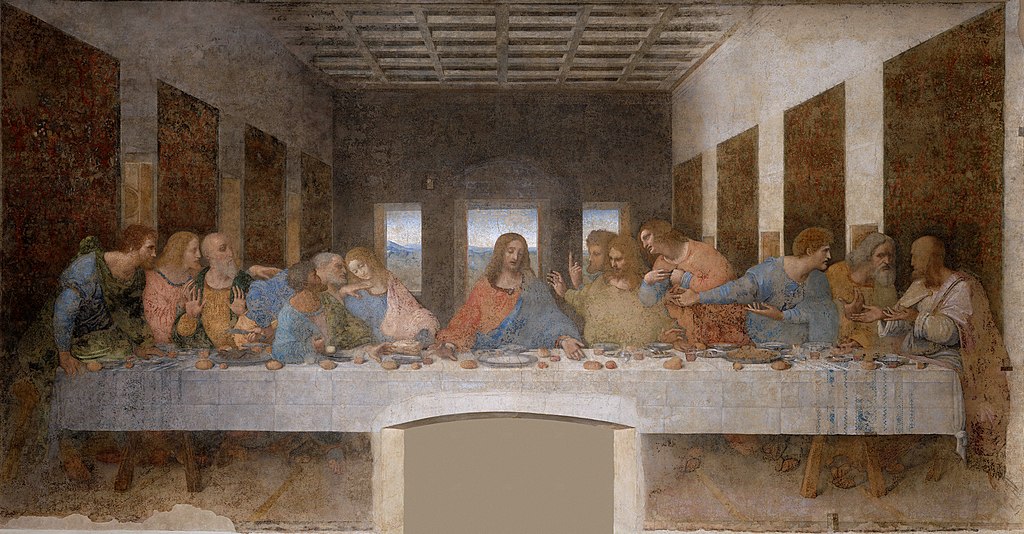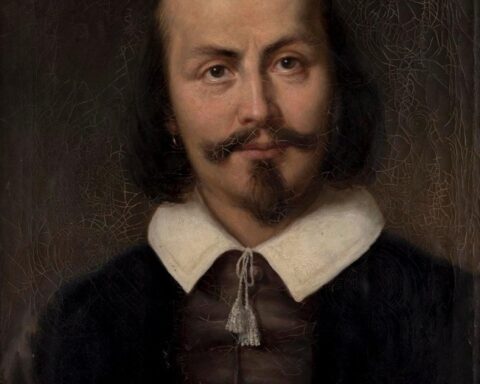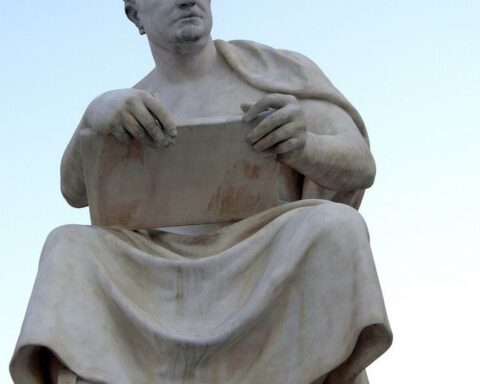Long ago in ancient Peru, there was a legend of a time of worldwide darkness. It is said the sun was gone for five days. Stones knocked against one another. Shepherds were attacked by their own sheep whether they were running away in the fields or hiding in their homes. Even the mortars and pestles (grinders and their bowls) are said to have rebelled against their owners.
In another Peruvian story, it is said that there was a people before the Incans. These ancient people experienced a period without light. So they prayed until the sun finally rose from Lake Titicaca, and in the midday, a white man who carried great authority came into the land. He is said to have turned hills into plains, and vice versa. Fountains sprang from the very stones. He was a man to be venerated, and those ancient people regarded him as the Maker of everything.
The first tale originates from the Huarochiri Manuscript, by a cleric named Francisco de Avila. The second tale stems from El Señorío De Los Incas, from the second part of The Chronicle of Peru (recorded by Pedro Cieza de Leon). Both stories are said to be an account of the day Jesus Christ died, and the world turned to darkness.
There are also records of this mysterious worldwide darkness on the other side of the world. In ancient China, at approximately the time that Jesus Christ would have been crucified, Chinese astronomical reports tell the following:
“Summer, fourth month [of the year], on the day of Ren Wu, the imperial edict reads, “Yin and Yang have mistakenly switched, and the sun and moon were eclipsed. The sins of all the people are now on one man. Pardon is proclaimed to all under heaven.”
History of Latter Han Dynasty, Volume 1, Chronicles of Emperor Guang Wu, 7th year
And also:
“Eclipse on the day of Gui Hai, Man from Heaven died”.
History of Latter Han, Annals, No. 18, Gui Hai.
While these records state that this was an eclipse event, it is not unreasonable to consider that the Han were mistaken about the darkness’ cause. After all, the Chinese were a very astronomically-minded people in those days, and it would seem natural to pin the blame of such an event on something they were familiar with—an eclipse—whether there was one or not. (Also, it is worth adding that it is a popularly-held notion that three days after this event, a rainbow halo circled the sun according to these ancient observers. If true, this would have corresponded with the Resurrection of our Lord.)
The Mediterranean
It is certainly interesting to observe how even ancient man was trying to explain away supernatural events with natural ones—a hobby often taken up in our modern day. Returning to ancient Greece, we can read from Pseudo-Dionysus in a letter to Polycarp:
Then ask him: “What have you to say about the Solar Eclipse, which occurred when the Savior was put on the cross? At the time the two of us were in Heliopolis and we both witnessed the extraordinary phenomenon of the moon hiding the sun at the time that was out of season for their coming together… We saw the moon begin to hide the sun from the east, travel across to the other side of the sun, and return on its path so that the hiding and the restoration of the light did not take place in the same direction but rather in diametrically opposite directions…”
In 1457, Lorenzo Valla would ridicule this notion that Christ’s crucifixion was caused by an eclipse. In our modern day, NASA and astronomers worldwide would solidify Valla’s position, pointing to the fact that no projection of the ancient past shows an eclipse at that time. And yet it happened. Ancient man was witnessing a global supernatural occurrence.
If we jump to 52 AD, we can read a Greek secular historian named Thallus who recorded the following:
“On the whole world there pressed a most fearful darkness; and the rocks were rent by an earthquake, and many places in Judea and other districts were thrown down. This darkness Thallus, in the third book of his History, calls, as appears to me without reason, an eclipse of the sun.”
Julius Africanus, Chronography, 18:1
This quote of one of Thallus’ lost writings was by Julius Africanus, who was writing about the event around 221 AD. Africanus also discusses another ancient who bore testimony to the darkness of Christ’s crucifixion:
“Phlegon records that, in the time of Tiberius Caesar, at full moon, there was a full eclipse of the sun from the sixth to the ninth hour; it is clear that this is the one. But what have eclipses to do with an earthquake, rocks breaking apart, resurrection of the dead, and a universal disturbance of this nature?”
Ibid
This very same Phlegon is also quoted in Eusebius’ The Chronological Canons:
“However in the fourth year of the 202nd olympiad, an eclipse of the sun happened, greater and more excellent than any that had happened before it; at the sixth hour, day turned into dark night, so that the stars were seen in the sky, and an earthquake in Bithynia toppled many buildings of the city of Nicaea.”
Picking on Pliny
Pliny the Elder, also alive during the time of the Crucifixion—yet scorning the very idea of a Christian God—couldn’t help but dip his own toes into discussions about the powerful meaning behind eclipses and dimmed suns:
“Eclipses of the sun also take place which are portentous and unusually long, such as occurred when Cæsar the Dictator was slain, and in the war against Antony, the sun remained dim for almost a whole year”
Pliny the Elder, Natural History, II, 30
One cannot help but wonder if Pliny was intentionally avoiding an elephant in the room in the case of Christ’s death. He would not be the first to do so. But he gives himself away when he says the words “such as,” for Pliny had borne witness to other such supernatural solar darkenings—namely, that of Jesus Christ. But such men were obstinate, and being disbelievers in the Messiah, they would never acknowledge Him.
The Jewish historian Flavius Josephus would share in Pliny’s commentary on the dimming sun.
But when those that were adversaries to you, and to the Roman people, abstained neither from cities nor temples, and did not observe the agreement they had confirmed by oath, it was not only on account of our contest with them, but on account of all mankind in common, that we have taken vengeance on those who have been the authors of great injustice towards men, and of great wickedness towards the gods; for the sake of which we suppose it was that the sun turned away his light from us, as unwilling to view the horrid crime they were guilty of in the case of Caesar.
From Josephus’ The Antiquities of the Jews, Book XIV
While at first blush, to the Christian, it appears that Josephus could possibly be referring to the darkness that followed Jesus’ crucifixion. However, recall that the Romans often viewed their own Caesars as deities, that they were elevated into godhood, and that Roman citizens even made sacrifices to them. In that context, then, it is clear that when Josephus talks to the Romans about “great wickedness towards the gods,” he is referring to the betrayal of Julius Caesar, who was blatantly murdered in the Roman Senate by 60 of Rome’s senators. Both he and Pliny the Elder attribute a long period of a dimmed sun following Julius Caesar’s death.
All this said, early Christians, such as Tertullian knew the historical record. Men, such as he, knew quite well that the Romans kept records of strange astronomical events like Christ’s Crucifixion darkness, and Tertullian made sure to hold it over their heads:
“And yet, nailed upon the cross, He exhibited many notable signs, by which His death was distinguished from all others. At His own free-will, He with a word dismissed from Him His spirit, anticipating the executioner’s work. In the same hour, too, the light of day was withdrawn, when the sun at the very time was in his meridian blaze. Those who were not aware that this had been predicted about Christ, no doubt thought it an eclipse. You yourselves have the account of the world-portent still in your archives.”
Tertullian, Apologia 21
Later, in the 4th century, Rufinus of Aquileia would also call upon the Romans to check their logbooks for that period of darkness that was so conspicuously avoided by Pliny:
“Search your writings and you shall find that in Pilates time, when Christ suffered, the sun was suddenly withdrawn and darkness followed”
Indeed, the sun does get darkened during times of great Heavenly pain—during times such as a crucifixion of the God-man, for example. And yet, conveniently enough, Pliny omits even mentioning the event. Instead, he’s happy to prattle on about the virtue of turnips until his date with destiny at Mount Vesuvius.
Myth and Science
As long as we’re discussing opinions based in the Mediterranean, it is interesting to note how in Greek mythology, after the titan Prometheus (also known as the Logos) dared to bring fire down from Heaven to mankind, he was crucified with nails in his feet and his outstretched hands—the same positioning as Jesus Christ. The ancient titan was nailed straight into the rocks of Mount Caucasus. And as this transpired, the sky went dark, the earth shook, there was thunder and lightning, wind, rising seas, and an overall convulsion of nature:
“Lo, streaming from the fatal tree, His all-atoning blood!”
From “Prometheus Bound” by Aeschylus
[…]
“Tis he, Prometheus, and a God! Well might the sun in darkness hide, And veil his glories in, when God, the great Prometheus, died, for man, the creature’s sin.”
The above was a poem recorded over four hundred years before Jesus was even born. Such a thing as this is a prophetic typology in an old pagan religion, and it’s been known to happen before. We see this in several places, including in Norse mythology. While the “crucifixion” of Odin does not involve a moment of worldwide darkness, other elements of his torture do compare to what transpired with Jesus, such as his hanging on the World Tree for nine days, and his being pierced by the spear Gungnir, just as Christ hung from the Cross and was pierced by the spear of the centurion.
Yet, while there might be some scrap of prefiguring truth in the ancient pagan religions, one could go to the other extreme and look at raw modern science. In 2012 it was reported that, according to a geologic investigation of three rock core samples in the area, an enormous earthquake most certainly took place during the time that Jesus Christ would have been crucified. This seismic event was energetic enough to deform the sediments of the Ein Gedi Spa, right next to the Dead Sea.
Ireland
There is, however, one final tale to share involving the worldwide darkness of Christ’s Crucifixion. This is about a king named King Conor Mac Nessa. As the legend goes, this warrior king took a wound to the head that would eventually seal his fate. In battle with a fellow warrior, Conor’s enemy used a sling to shoot a projectile straight into his skull. The object remained there, stuck in his head after that fight. Physicians could not remove it without killing him, and so there it stayed for seven long years. As long as King Conor didn’t get over excited, he would be fine. Yet if he over exerted himself, there was the chance that he could complicate his condition and die.
But then came the day when King Conor Mac Nessa learned about the Crucifixion of Jesus Christ. He learned this as it was happening, in real time:
So years had passed over, when, sitting mid silence like that of the tomb,
A terror crept through him as sudden the noon-light was blackened with gloom.
One red flare of lighting blazed brightly, illuming the landscape around,
One thunder-peal roared through the mountains, and rumbled and crashed under ground;
He heard the rocks bursting asunder, the trees tearing up by the roots,
And loud through the horrid confusion the howling of terrified brutes.
From the halls of his tottering palace came screamings of terror and pain,
And he saw crowding thickly around him the ghosts of the foes he had slain!
The light of the afternoon had gone away, and everything went dark. Then there was lightning, thunder, and earthquakes. There was a mass panic, and suddenly he bore witness to the ghosts of his enemies. This phenomenon simultaneously took place in Jerusalem, shortly after Jesus had died on the Cross. As Matthew 27:52-54 relates, the dead rose from their own tombs and walked the very streets. (Blessed Catherine Anne Emmerich also relates a lot of the details of this frightening moment, though that is beyond the scope of this article.) Terrified, King Conor calls for some counsel:
And as soon as the sudden commotion that shuddered through nature had ceased,
The king sent for Barach, his Druid, and said: “Tell me truly, O priest,
What magical arts have created this scene of wild horror and dread?
What has blotted the blue sky above us, and shaken the earth that we tread?
Are the gods that we worship offended? what crime or what wrong has been done?
Has the fault been committed in Erin, and how may their favor be won?
What rites may avail to appease them? what gifts on their altars should smoke?
Only say, and the offering demanded we lay by your consecrate oak.”
King Conor realizes that this is all being caused by some sort of supernatural act, and he immediately attributes it to the pagan gods he is familiar with. He wants to appease them, and he asks his druid for advice on what to do. The solution, however, is beyond the king’s ability:
“O king,” said the white-bearded Druid, “the truth unto me has been shown,
There lives but one God, the Eternal; far up in high Heaven is His throne.
He looked upon men with compassion, and sent from His kingdom of light
His Son, in the shape of a mortal, to teach them and guide them aright.
Near the time of your birth, O King Conor, the Savior of mankind was born,
And since then in the kingdoms far eastward He taught, toiled, and prayed, till this morn,
When wicked men seized Him, fast bound Him with nails to a cross, lanced His side,
And that moment of gloom and confusion was earth’s cry of dread when He died.
O king, He was gracious and gentle, His heart was all pity and love,
And for men He was ever beseeching the grace of His Father above;
He helped them, He healed them, He blessed them, He labored that all might attain
To the true God’s high kingdom of glory, where never comes sorrow or pain;
But they rose in their pride and their folly, their hearts filled with merciless rage,
That only the sight of His life-blood fast poured from His heart could assuage:
Yet while on the cross-beams uplifted, His body racked, tortured, and riven,
He prayed–not for justice or vengeance, but asked that His foes be forgiven.”
King Conor is briefly tutored about the character and quality of our Lord. And upon hearing of His unjust execution, he cannot help himself. His heart is stirred, he becomes enraged, and he works himself up at the terrible news:
With a bound from his seat rose King Conor, the red flush of rage on his face,
Fast he ran through the hall for his weapons, and snatching his sword from its place,
He rushed to the woods, striking wildly at boughs that dropped down with each blow,
And he cried: “Were I midst the vile rabble, I’d cleave them to earth even so!
With the strokes of a high king of Erinn, the whirls of my keen-tempered sword,
I would save from their horrible fury that mild and that merciful Lord.
“His frame shook and heaved with emotion; the brain-ball leaped forth from his head,
And commending his soul to that Savior, King Conor Mac Nessa fell dead.
Agitated and roused, the king runs into the woods and starts chopping at the tree branches, desperate to somehow make his way to the people who dared to kill the Messiah. But in his anger, the projectile that was lodged in his skull popped out, and he shortly died right there on the spot.
The rage and frustration of King Conor Mac Nessa can be also seen in the example of King Clovis, four centuries later. Edward Gibbon, no fan of Christianity, describes the mind of Clovis as being susceptible of transient fervor. Exacerbated by “the pathetic tale of the passion and death of Christ,” Clovis rose up in a fury and declared:
If I had been there with my valiant Franks, I would have avenged Him!
Would that all of us could have been there, King Clovis. It would have been glorious to fight for such a cause.










[…] magnitude of that crime was such that Nature herself recoiled. Historical records from around the world – not merely the Levant or the Mediterranean powers – show at the very least a […]
[…] of Men of the West, a collection of historical world accounts of the darkness at […]
This is one of the most powerful articles, I’ve ever read. Frankly, it’s so powerful and compiles so many events around the world that I had to google many of them to ensure they were historically mentioned. Yep, they were. Many thanks to Adam Piggott for linking this article on his website, “Pushing Rubber Downhill.” If only non-believers could be exposed to such information…..
Outstanding!
toolset
I am not sure what your comment means here.
I believe all this happened. I’m a believer of Jesus Christ.
Mr. Hirsch,
Do you mind if I repost this article on my substack (with attribution and a link back here of course.
I will reach out to him and let him know you asked.
Mr. Greenwood. Please proceed! And if you wouldn’t mind, share the link once you do. I’d be curious to read the comments there. Take care, -LH